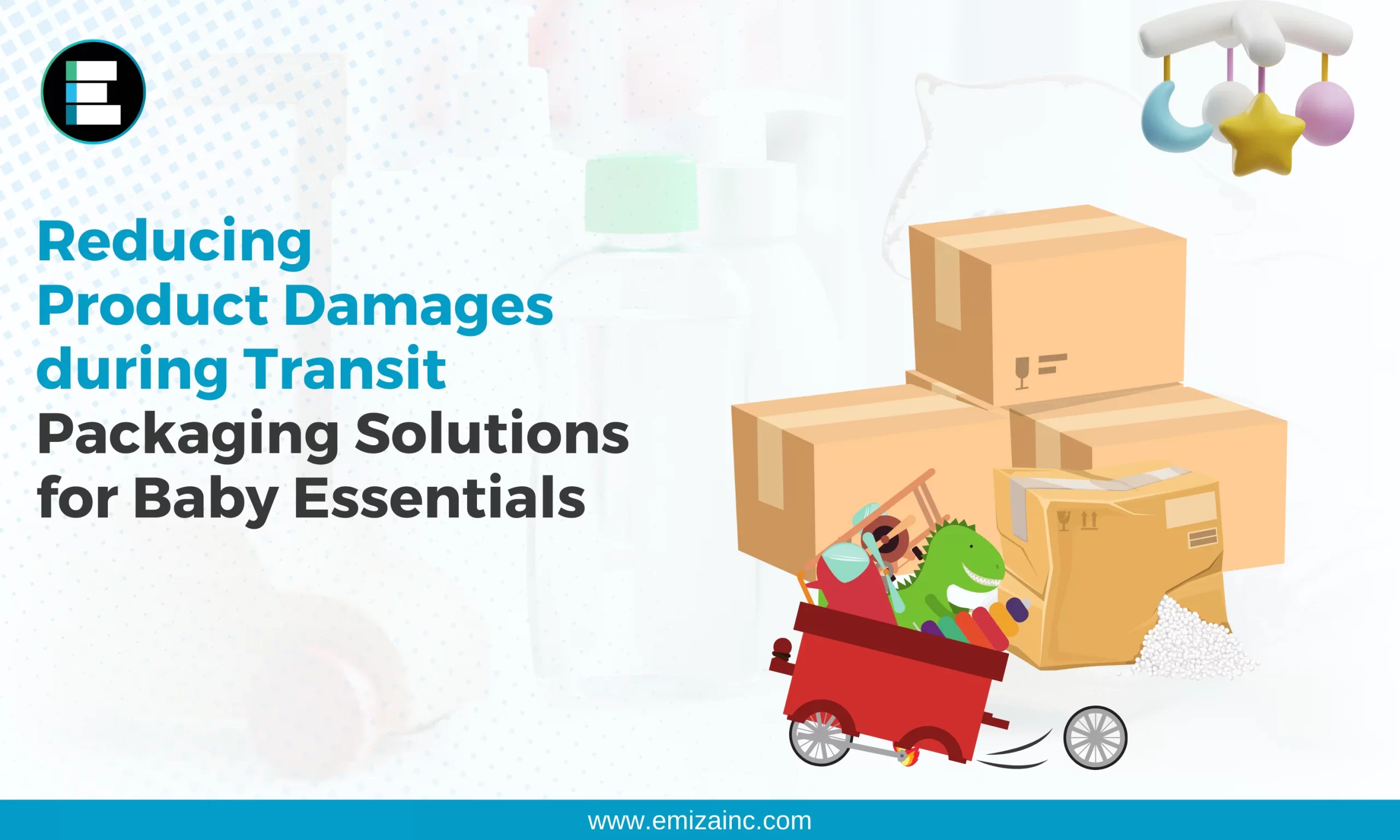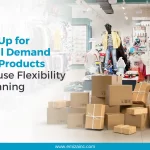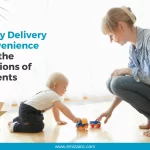If you’re in the business of selling baby essentials, you know how important it is to ensure that your products reach your customers in perfect condition. Babies are delicate, and so are their products. Any damage to baby essentials during transit can lead to customer dissatisfaction and even safety concerns. To address these challenges, it’s crucial to invest in the right packaging solutions that not only protect your products but also reflect your brand’s commitment to quality and safety.
Understanding the Challenge
Before we dive into the solutions, let’s understand why reducing product damages during transit is such a critical concern for businesses dealing with baby products.
1. Fragility of Baby Essentials
Baby essentials, such as feeding bottles, pacifiers, diapers, and baby clothing, are often fragile and sensitive to external forces. Even a minor dent or scratch can render these products unsafe or unsuitable for use.
2. Safety Concerns
Many baby products come with safety certifications and standards. Any damage during transit can compromise these safety features, putting infants at risk.
3. Customer Expectations
Parents are particularly discerning when it comes to their baby’s products. They expect items to arrive in pristine condition, and any damage can lead to dissatisfaction and lost trust in your brand.
4. Returns and Replacements
Product damages can result in a higher number of returns and replacements, which not only incur additional costs but also create inconvenience for your customers.
Given these challenges, let’s explore packaging solutions that can help mitigate the risk of product damage during transit.
Packaging Solutions for Baby Essentials
1. Customized Boxes
Investing in custom packaging for your baby products is a wise choice. Customized boxes are designed to fit your products perfectly, minimizing the chances of movement within the packaging. This prevents products from colliding with each other, reducing the risk of damage.
Benefits:
Perfect fit for your products.
Enhanced brand visibility and recognition.
Improved protection during transit.
2. Bubble Wrap and Cushioning Materials
Bubble wrap and cushioning materials are your best friends when it comes to protecting fragile baby essentials. Wrap individual items or line the inside of your packaging boxes with bubble wrap to create a protective barrier against shocks and vibrations during transit.
Benefits:
Excellent shock absorption.
Lightweight and cost-effective.
Versatile and easy to use.
3. Air Pillows
Air pillows are inflatable cushions that can be used to fill empty spaces within packaging boxes. They provide an extra layer of protection by preventing products from shifting during transit.
Benefits:
Efficient use of space within the box.
Effective protection against impact.
Lightweight and eco-friendly options are available.
4. Tamper-Evident Seals
For baby products, safety and integrity are paramount. Tamper-evident seals provide assurance to your customers that the products they receive have not been tampered with during transit. This not only protects your brand reputation but also ensures the safety of the products.
Benefits:
Deters tampering and theft.
Builds trust with customers.
Easy to apply and visually reassuring.
5. Poly Mailers
Poly mailers are lightweight and durable packaging options that work well for smaller baby essentials like clothing and accessories. They are tear-resistant and can be customized with your branding.
Benefits:
Lightweight and cost-effective.
Tear-resistant and waterproof.
Customizable for branding.
6. Fragile Stickers
Clearly marking your packages with “Fragile” stickers can alert handlers to exercise caution when dealing with your shipments. While it won’t guarantee gentle handling, it does increase awareness about the delicate nature of the contents.
Benefits:
Alerts handlers to fragile items.
Inexpensive and easy to apply.
May lead to more careful handling.
7. Double-Boxing
For particularly delicate baby products or high-value items, consider double-boxing. Place the primary product box inside a larger outer box with adequate cushioning materials. This provides an extra layer of protection against impacts.
Benefits:
Maximum protection for high-value items.
Reduces direct impact on the primary product box.
Ideal for fragile or expensive baby essentials.
8. Palletization for Bulk Shipments
If you are shipping baby products in bulk to retailers or distributors, palletization is a must. It involves securing products on pallets and wrapping them with stretch film. This not only protects the products but also makes handling and transport more efficient.
Benefits:
Prevents damage from shifting during transit.
Streamlines handling for bulk shipments.
Reduces the risk of damage in storage.
9. Temperature-Controlled Packaging
Some baby products, such as baby food and medicines, require temperature-controlled packaging to maintain their integrity. Insulated packaging with ice packs or gel packs can help ensure these products arrive in the right condition.
Benefits:
Preserves product quality.
Complies with safety regulations.
Ideal for sensitive baby essentials.
10. Eco-Friendly Packaging
In today’s environmentally conscious world, using eco-friendly packaging materials is not just a trend; it’s an ethical choice. Consider using biodegradable or recyclable packaging materials to show your commitment to sustainability while protecting your baby products.
Benefits:
Appeals to environmentally conscious customers.
Reduces your carbon footprint.
Aligns with corporate social responsibility goals.
Tips for Implementing Effective Packaging Solutions
Now that you’re familiar with various packaging solutions for baby essentials, here are some tips to help you implement them effectively:
1. Understand Your Products
Before selecting packaging solutions, thoroughly understand the nature of your baby products. Consider their size, shape, fragility, and any specific requirements, such as temperature control.
2. Test Your Packaging
Don’t rely solely on theory. Conduct tests to ensure that your chosen packaging solutions effectively protect your baby essentials during transit. This may involve drop tests, compression tests, and temperature tests, depending on your products.
3. Train Your Staff
Ensure that your staff is well-trained in packaging procedures. Proper handling and packing techniques can make a significant difference in protecting your baby products.
4. Monitor and Adjust
Regularly monitor the performance of your packaging solutions. If you notice an increase in damaged products, be prepared to adjust your packaging methods accordingly.
5. Communicate with Your Customers
Inform your customers about your commitment to safe packaging. Let them know what measures you’ve taken to protect their baby essentials during transit. This transparency can build trust and loyalty.
Conclusion
Reducing product damages during transit is a top priority for businesses in the baby essentials industry, especially in India, where the market is highly competitive and customer expectations are soaring. By investing in the right packaging solutions tailored to your products, you not only protect your merchandise but also enhance your brand’s reputation for quality and safety.
Remember that packaging isn’t just about protection; it’s also an opportunity to showcase your brand’s values. Whether it’s through customized boxes, eco-friendly materials, or tamper-evident seals, your packaging choices speak volumes about your commitment to your customers’ satisfaction and the well-being of their little ones.
In the end, the extra effort you put into packaging will pay off in the form of happy, loyal customers who trust your brand to deliver safe and impeccable baby essentials every time. So, don’t overlook the power of packaging—embrace it as a crucial part of your D2C baby essentials business strategy in India.



